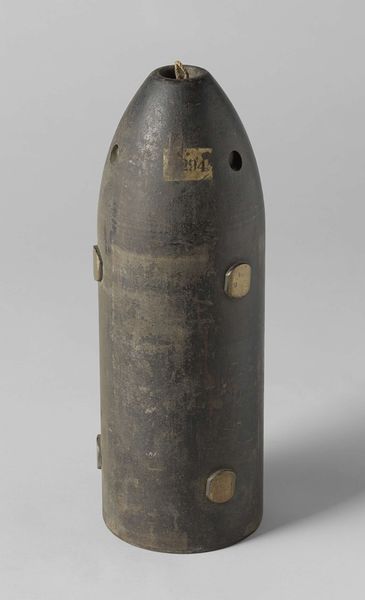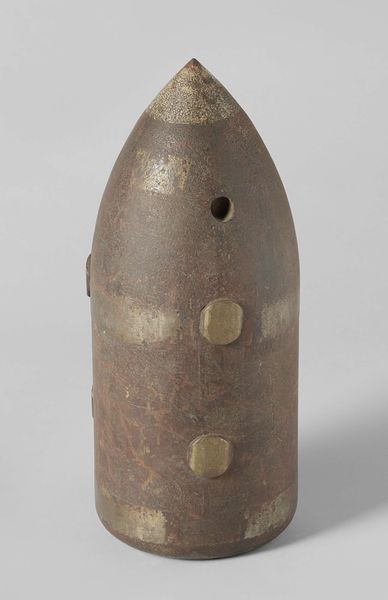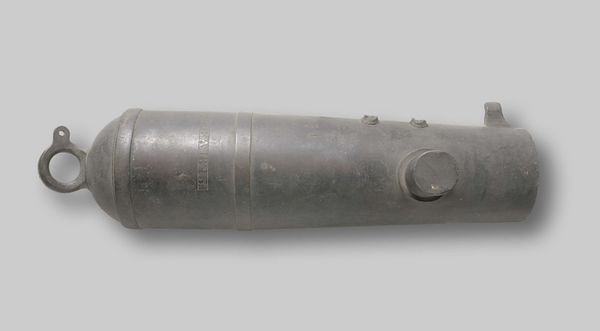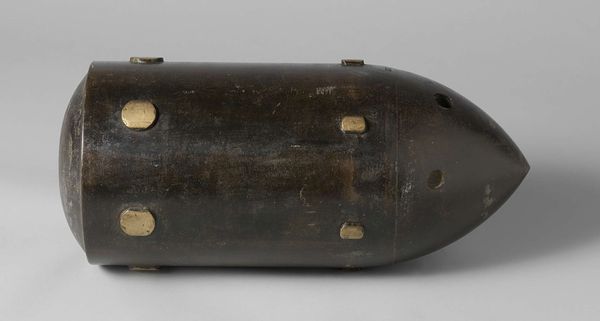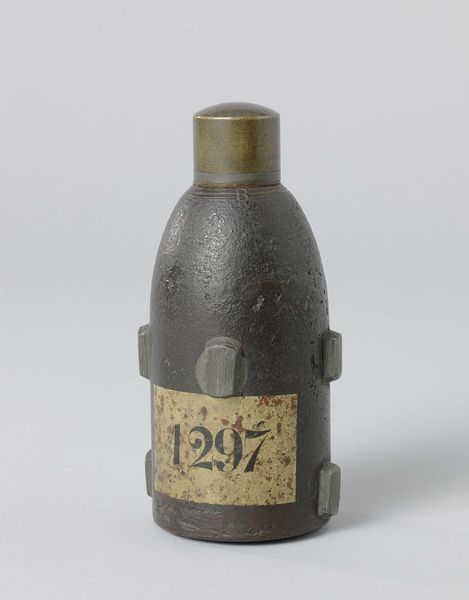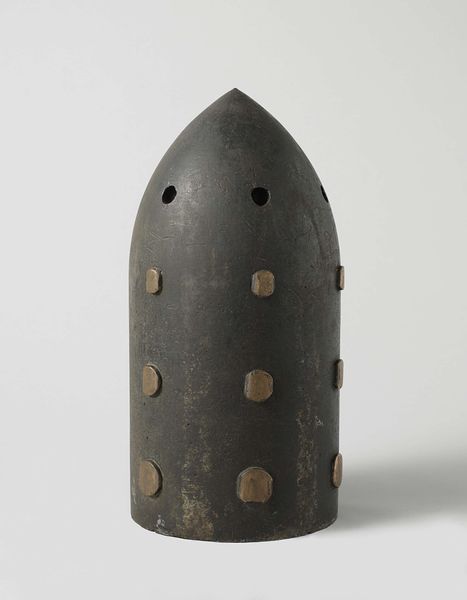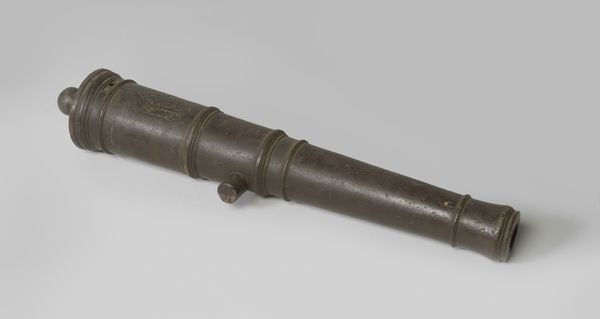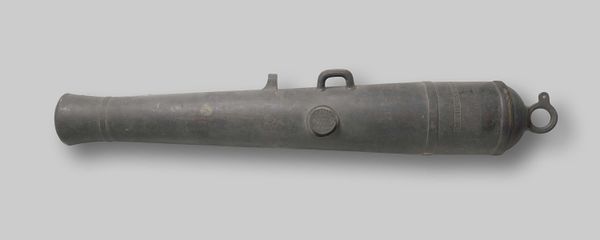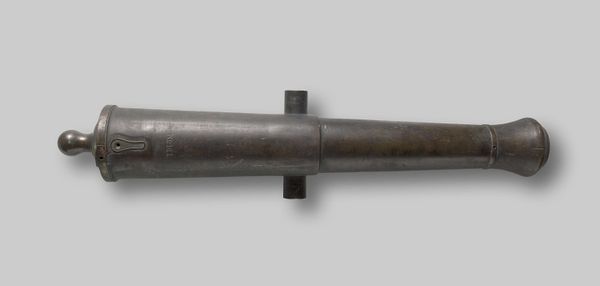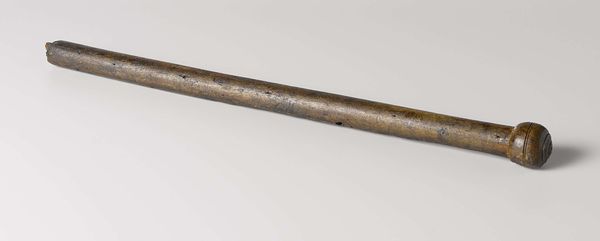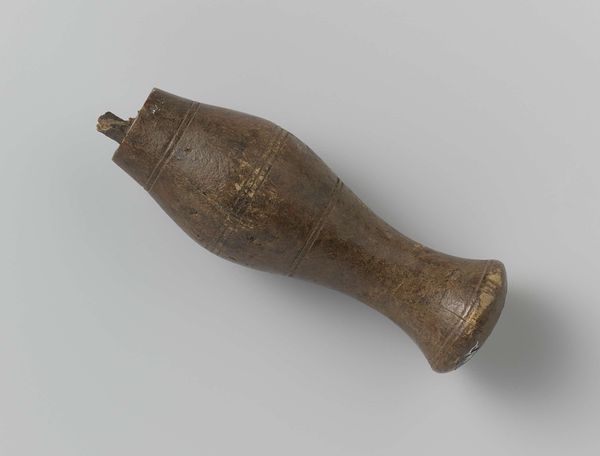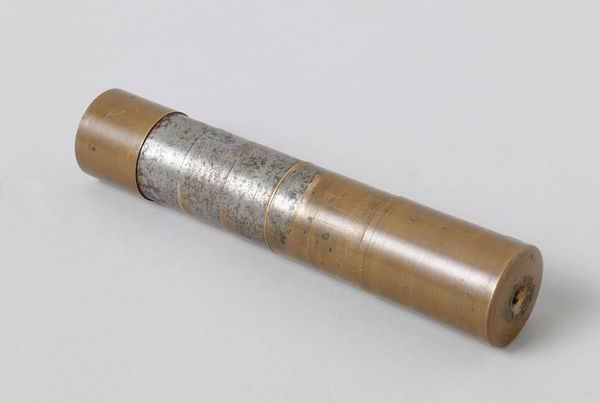
metal, ceramic, bronze, sculpture
#
metal
#
ceramic
#
bronze
#
sculpture
#
ceramic
#
decorative-art
Dimensions: length 67.4 cm, diameter 22.6 cm, weight 104.4 kg
Copyright: Rijks Museum: Open Domain
Curator: It has such a potent, still quality. It reminds me of reliquaries—holding something sacred, but in this case, something far more destructive. Editor: Precisely. What you are observing is a 23-cm Shell, crafted by the Royal Laboratory in 1866. It’s comprised of bronze and ceramic elements with some metallic touches. Curator: It's quite striking how something intended for violence can be so carefully, even beautifully, made. There's a strange contradiction in its being a piece of decorative art almost, wouldn't you say? Like some warped peace offering. Editor: These shells certainly reveal a peculiar societal paradox. The industrial revolution saw an increasing investment in instruments of war, and the display of this investment took on its own symbolic language. Curator: It makes me wonder about the mindset of the people who created it. Were they thinking of artistry, or purely of the function this object served, the lives it could potentially extinguish? Perhaps a bit of both. War, like all major societal structures, develops its own rituals, its own iconography. Editor: Consider also how this object may have been viewed at different points in history. In 1866, it would have been an emblem of national power. Now, in our current moment, after experiencing the brutal efficacy of total war and modern weaponry, it takes on an almost mournful quality. Curator: It carries echoes of conflict. You see these objects recontextualized over and over again in museums as artifacts instead of weapons, like relics of destruction divorced from the pain they once caused. It begs a lot of difficult questions around cultural memory and the aesthetics of violence. Editor: Absolutely. How do societies choose to represent violence and how do we teach or remember the history connected with these displays? These shells force a confrontation with a past we may be tempted to forget. A very charged and unsettling kind of object to contemplate. Curator: Agreed, a small but powerfully loaded artwork! I'm seeing the history of the nineteenth century a bit differently now. Editor: Me too, contemplating how cultural objects evolve—shifting from representations of power to haunting reminders of what power can do.
Comments
No comments
Be the first to comment and join the conversation on the ultimate creative platform.
